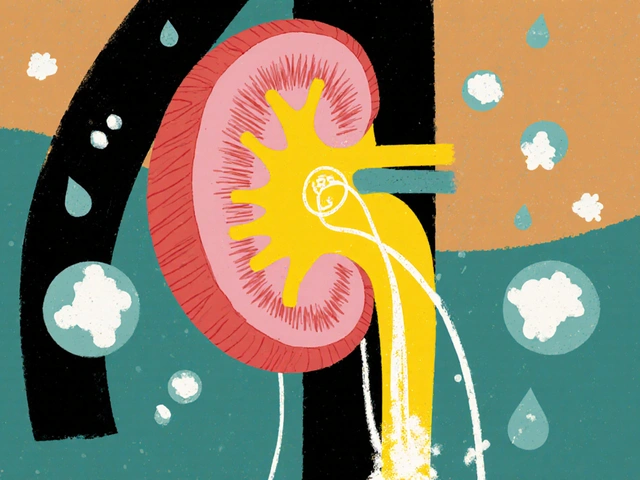Panic Disorder Help
Panic attacks can appear out of nowhere and feel like you're losing control. I've been with patients who describe chest pain, short breath, trembling, and the urgent need to escape. That's a panic attack. Panic disorder is when these attacks happen repeatedly and you start changing your life to avoid them.
How do you know it's a panic attack and not a heart problem? Sudden intense fear, a racing heart, sweating, dizziness, nausea, and a feeling of detachment are common panic symptoms. If chest pain is severe or you worry about your heart, seek emergency care. Better safe.
When an attack starts, what helps fast?
Try these steps: slow your breathing — breathe in for four counts, out for six. Ground with the five senses trick: name five things you see, four you can touch, three you hear, two you smell, one you taste. Focus on an object and describe it in detail. These actions calm your nervous system and shorten attacks.
Longer term, effective treatments include cognitive behavioral therapy (CBT) and certain medications.
CBT teaches you to question thoughts that fuel panic and to face triggers gradually. SSRIs like paroxetine and sertraline can lower attack frequency over weeks. Short-term benzodiazepines work fast but carry dependence risks, so talk about pros and cons with your doctor. If medications worry you, ask about other options — newer research on brain proteins and alternative drugs is growing, and some people benefit from non-drug strategies.
Lifestyle changes really matter. Regular exercise reduces anxiety sensitivity. Cut back on caffeine and nicotine since they can spark attacks. Practice consistent sleep, keep hydrated, and limit alcohol. Simple daily habits lower your baseline anxiety and make attacks less likely.
What about coping during daily life? Plan small exposures to feared situations rather than avoiding them. Use breathing and grounding when you feel tension building. Tell a trusted friend what you might need during an attack — a quiet space, a hand to hold, or just a calming voice. Knowing your plan reduces panic about panic.
When to see a professional? If attacks happen more than once, interfere with work or relationships, or you fear they will happen, reach out. A primary care doctor can evaluate physical causes and refer you for therapy or psychiatric care. If a medication is started, monitor side effects closely and keep regular follow-ups.
Finding reliable info online is tricky. Use trusted medical pages and consult clinicians before changing treatments. On PrescriptionPoint.SU you can find clear articles about medications like paroxetine and about therapy options. Read real-world guides before you ask your provider questions.
Panic disorder is scary, but manageable. With the right mix of quick tools, therapy, lifestyle changes, and medical guidance, most people regain control. Pick one small step today — practice the breathing trick or call your doctor. Small moves add up. If medication or therapy feels overwhelming, ask for a stepped plan and written goals — it makes treatment clearer and easier to follow right away.

Hi there! Today, I'd love to share some experiences and tips on navigating relationships while dealing with panic disorder. It can be challenging, believe me, but it's not impossible. From thoughtful communication to choosing the right date settings, we'll explore ways to find a balance between your love life and managing your condition. Navigating the world of dating can be complex, but with these tips, it's going to be a journey worth embarking on.
Continue Reading




